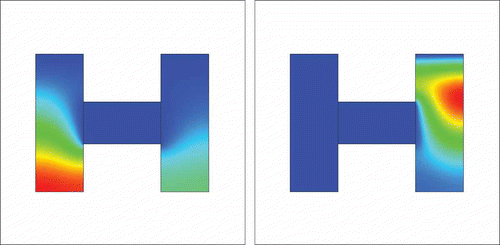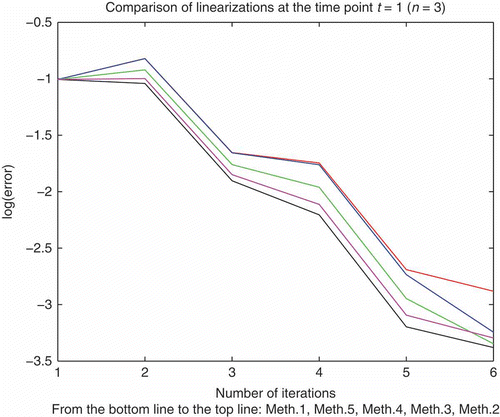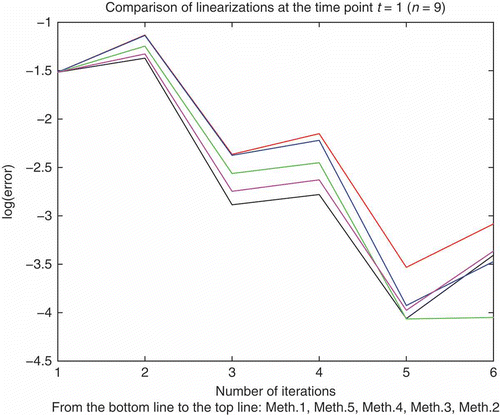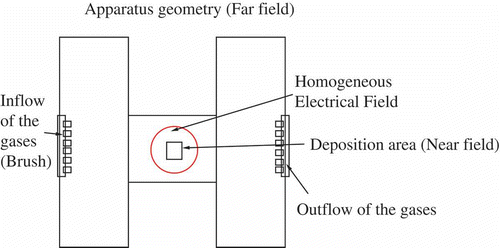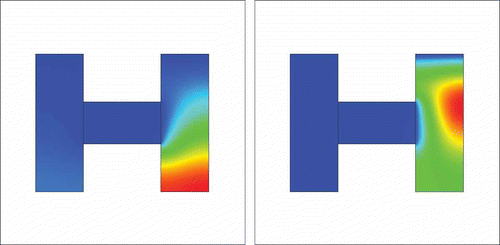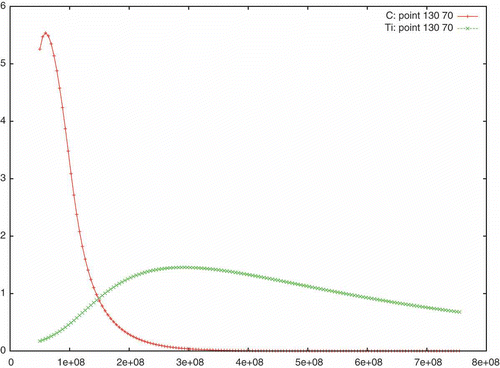Figures & data
Table 1. Numerical errors of the linearization techniques 1)–4) for the non-linearity .
Table 2. Numerical errors of the linearization techniques 5)–7) for the non-linearity .
Table 3. Numerical errors of the linearization techniques 1)–4) for the non-linearity .
Table 4. Numerical errors of the optimal linearization technique 4).
Table 5. Physical parameters.
Figure 4. x-axis: Time scale, y-axis: concentration, numerical solution and exact solution coincide in the same line.
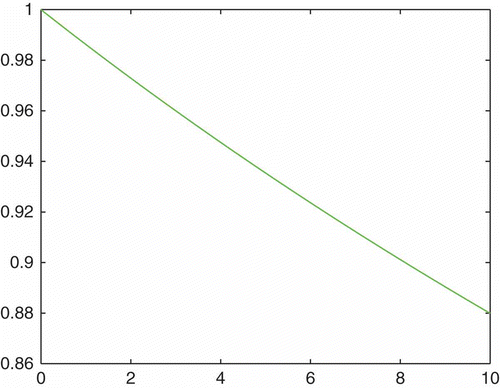
Table 6. Computed and experimental fitted parameters with UG simulations.
Figure 6. Two inflow sources and
with perpendicular velocity and 100 time-steps, with the ratio between C and Ti equal to 3.6.
